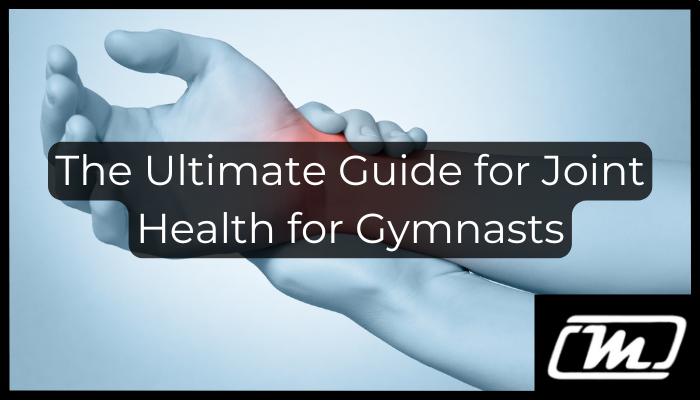Gymnastics is one of the most physically demanding sports. Each practice includes hard landings, repeated skills, and stress on the joints—especially the ankles, wrists, and shoulders. These joints often take the most impact and are the most likely to get injured without the right support.
This guide shares 7 strategies supported by sports science, physical therapy experts, and top gymnastics coaches. These tips are simple to understand and help gymnasts stay healthy, strong, and active for years to come.
Why Are Gymnasts’ Joints at Risk?
Gymnastics combines high impact and repetitive motion. These demands put pressure on growing joints, which can lead to overuse or sudden injuries.
- Ankles take the force from landings. If landings aren’t done properly or the mats are worn out, gymnasts can suffer sprains or even damage growth plates in young athletes.
- Wrists are under stress from tumbling, vault, and bar work. Gymnast wrist (distal radial epiphysitis) is a common overuse injury in youth athletes.
- Shoulders are used in nearly all events. Without good mobility and control, gymnasts may develop impingement or labral injuries.
1. Teach Safe Landing Techniques and Use Proper Mats
The majority of lower-body injuries in gymnastics happen during landings. Safe technique and quality mats make a big difference.
What to Do:
- Teach landings with bent knees and hips, feet shoulder-width apart, and arms forward.
- Focus on soft, controlled landings. Cue athletes to bend and hold to reduce impact.
- Use foam or resi landing mats with proper thickness and rebound to absorb force.
Check your mats regularly. If they stay compressed or feel stiff, they may be increasing injury risk.
2. Strengthen the Muscles that Support Joints
Strong muscles help support and protect joints from injury. Weak muscles leave joints more exposed to stress.
Areas to Focus:
- Core and hip control: Important for balance and safe landings.
- Hamstrings and glutes: Especially for absorbing impact.
- Shoulders and upper back: Improve stability during bar and vault skills.
Strength training is one of the most effective ways to reduce injuries in young athletes.
3. Condition the Wrists Regularly
Wrist pain is very common in gymnastics. Conditioning the wrists like any other joint helps them handle impact better.
Helpful Drills:
- Wrist walks: Move forward and backward on hands with fingers pointed in different directions.
- Dowel rotations: Slowly turn a light stick back and forth using your wrists.
- Wall wrist push-ups: Easy way to build wrist strength with less pressure.
Many gymnastics programs recommend doing wrist prep 2–3 times a week to build durability.
4. Use Active Flexibility, Not Just Passive Stretching
While flexibility is important in gymnastics, passive stretching (where someone else pushes the limb) can sometimes weaken joint stability.
Safer Options:
- Active flexibility: Gymnasts use their own muscles to hold the position.
- Isometric holds: Tensing the muscle during the stretch to build strength.
- Joint-specific mobility drills: Controlled shoulder circles, ankle rocks, or wrist tilts.
Physical therapists and strength coaches recommend building strength at end ranges, especially for hypermobile athletes.
5. Balance Training and Rest
Too much training without enough rest is a key reason for joint overuse injuries.
Smart Planning:
- Limit high-impact landings per session and use soft surfaces like foam pits.
- Alternate intense training days with basics or conditioning.
- Plan at least one active recovery day each week.
Tracking training load and perceived effort can help reduce overuse injuries and keep athletes progressing safely.
6. Eat to Support Joint and Bone Health
Nutrition plays a big role in joint recovery and strength. Some nutrients help build cartilage, reduce inflammation, and protect bones.
Key Nutrients:
- Collagen + vitamin C: Can help build tendons and ligaments. Best taken before training.
- Vitamin D: Helps absorb calcium and keep bones strong.
- Omega-3 fats: May reduce soreness and joint inflammation.
Encourage gymnasts to get these from a balanced diet or approved supplements when needed.
7. Don’t Ignore Joint Pain
Even small aches can turn into major injuries if they’re ignored. Coaches and gymnasts should work together to identify pain early.
The 24-Hour Rule:
If pain, swelling, or stiffness lasts into the next day, modify or stop the activity until the joint is evaluated.
Early action can help prevent long recovery times and keep athletes training consistently.
Is Your Gym Supporting Joint Health?
Here are four simple questions to check:
- Are your landing mats supportive and in good condition?
- Do your coaches teach proper landing and joint alignment?
- Are athletes doing strength, wrist, and flexibility work regularly?
- Do you plan recovery and lighter days in your schedule?
Creating a safer environment doesn’t just prevent injuries—it supports long-term development and confidence.
Final Thoughts
Keeping joints healthy isn’t just about reacting to pain—it’s about building smart habits from the start. With good landings, proper strength work, safe flexibility, recovery time, and solid mats, your athletes can stay strong, safe, and in the sport longer.
Mancino has supported safe landings since 1966. Our American-made mats are trusted by gyms nationwide to protect gymnasts’ joints at every level.
Explore our full line of Gymnastics Landing Mats to upgrade your joint safety today.


